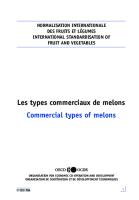Types of Conjunction [PDF]
Types of Conjunction A conjunction is a word that joins words, clauses, phrases or sentences. e.g. but, and, or, nor, ye
54 0 292KB
Papiere empfehlen
![Types of Conjunction [PDF]](https://vdoc.tips/img/200x200/types-of-conjunction.jpg)
- Author / Uploaded
- Ramil Depalma Nebril
Datei wird geladen, bitte warten...
Zitiervorschau
Types of Conjunction A conjunction is a word that joins words, clauses, phrases or sentences. e.g. but, and, or, nor, yet for, so,although, since, because, unless, when, where, while, etc. There are three major types of conjunctions: 1. Coordinating Conjunction 2. Subordinating Conjunction 3. Correlative Conjunction
Coordinating Conjunctions A coordinating conjunction joins words, phrases or clauses having similar grammatical structure. A coordinating conjunction is also called a coordinator, which are ‘but, and, or, so, nor, yet, for’. It joins the following: Word + Word Phrase + Phrase Clause + Clause Read the following example, the underlined parts are the words, phrases and clauses joined by the coordinating conjunction such as ‘and, or, but’ Examples:
He bought a book and a pen. I forgot to bring my laptop and camera. You may meet me at my home or at my office. He always sits in the library or in the classroom. I waited for him but he didn’t come. She requested him for help but he didn’t help her.
(two words) (two word) (two phrases) (two phrases) (two clauses) (two clauses)
It can be seen in the above examples, the words, phrases and clauses joined by coordinating conjunctions, in each sentence, are of similar grammatical nature.
Subordinating Conjunctions A subordinating conjunction joins a subordinate (dependent) clause to a main (independent) clause. A subordinating conjunction is also called subordinator, which are ‘although, because, before, if, how,since, once, till, until, where, when ,whenever, whether, after, while, no matter how, provided that, as soon as,even if’
Main Clause + Subordinate Clause Subordinate Clause + Main Clause.
A main clause is a group of words having a subject and a verb. A main clause can stand alone as a sentence because it can give complete meaning. On the other hand, the subordinate clause cannot stand alone as a sentence as it does not give complete meaning. It depends on main clause to give complete meaning. The subordinate clause starts with subordinating conjunctions as shown by the underlined words in the following examples. The parts of following sentences in red color are main clauses. The part of sentence in blue color are subordinate clauses. Examples: You will succeed in life provided that you think optimistically. We went to zoo where we saw an elephant. I will help whenever you need my help. All the shops were closed because it was late. It makes me happy when you laugh. I will not tell him the secret even if he insists a lot. Although It is raining, it is too hot today. As far as I know, he is a very nice person. If you avoid sugary foods, you will lose your weight.
Conjunctive Adverb A conjunctive adverb connects two independent clauses or sentences. Other adverbs modify or add to a word, but a conjunctive affects two sentences. The word “conjunctive” comes from the Latin for “join together.” Conjunctive Adverbs in Action A conjunctive adverb brings together two complete thoughts. Each clause can stand on its own as a sentence. The first clause is followed by a semi-colon. Sometimes there is a comma after the conjunctive adverb. Following is a list of conjunctive adverbs: also, anyway, besides, certainly, earlier, finally, further, for instance, for example, however, hence, in addition, instead, later, likewise, moreover, namely, next, now, nevertheless, on the other hand, otherwise, perhaps, so, still, then, therefore, thus, and undoubtedly. Conjunctive adverbs can be grouped according to function. This may help you understand them a bit better:
Sometimes their function is addition, and examples of these would be: “in addition, next, still, also, and again.” Comparison is another way they work, such as words like “also, likewise, and similarly.”
Concession is sometimes made with words like “granted and of course.” Adverbs like “although, instead, in spite of, and regardless”, show a contrast. Sometimes emphasis is the function, with words like “indeed, of course, and certainly.” Conjunctive adverbs can illustrate with words such as: “for example, namely, thus, and in conclusion.” Words that summarize include: “all in all, that is, in summary, and finally.” Time can be referred to with these words: “before, meanwhile, furthermore, lately, now, since, and thereafter.”
Examples of Conjunctive Adverbs Conjunctive adverbs are also called adverbial conjunctions. Here are a few examples to further illustrate what they do for sentences.
I wanted to see a scary movie; however, my friend wanted to see a comedy. You need to concentrate on your studies; otherwise, you will fail the class. The thunder and lightning were intense; consequently, the crowd dispersed. He enjoyed getting a new tie; nevertheless, a sports car would have been a better gift. We really need to go to the mall; in addition, we should see a movie. Conjunctive adverbs act like conjunctions; however, they are adverbs.
Other Functions Conjunctive adverbs can also function as a regular adverb and modify a verb, an adjective, or another adverb. In this case, they will not need extra punctuation. Here is an example:
“He was accordingly very interested in jazz.”
In this sentence the word “accordingly” is acting like an adverb and modifying the verb “interested.” Many times a conjunctive adverb will start a sentence and need a comma after it since it appears before an independent clause. Following are some examples:
Therefore, I will eat green eggs and ham. In other words, English is a hard language. Above all, we must try and save the planet.
Remember, adverbs change or modify verbs. Many end with "ly" which makes them easy to spot. Other adverbs, such as conjunctive adverbs may also end with "ly" (such as accordingly) or may not end in "ly" (such as also, next and before)









